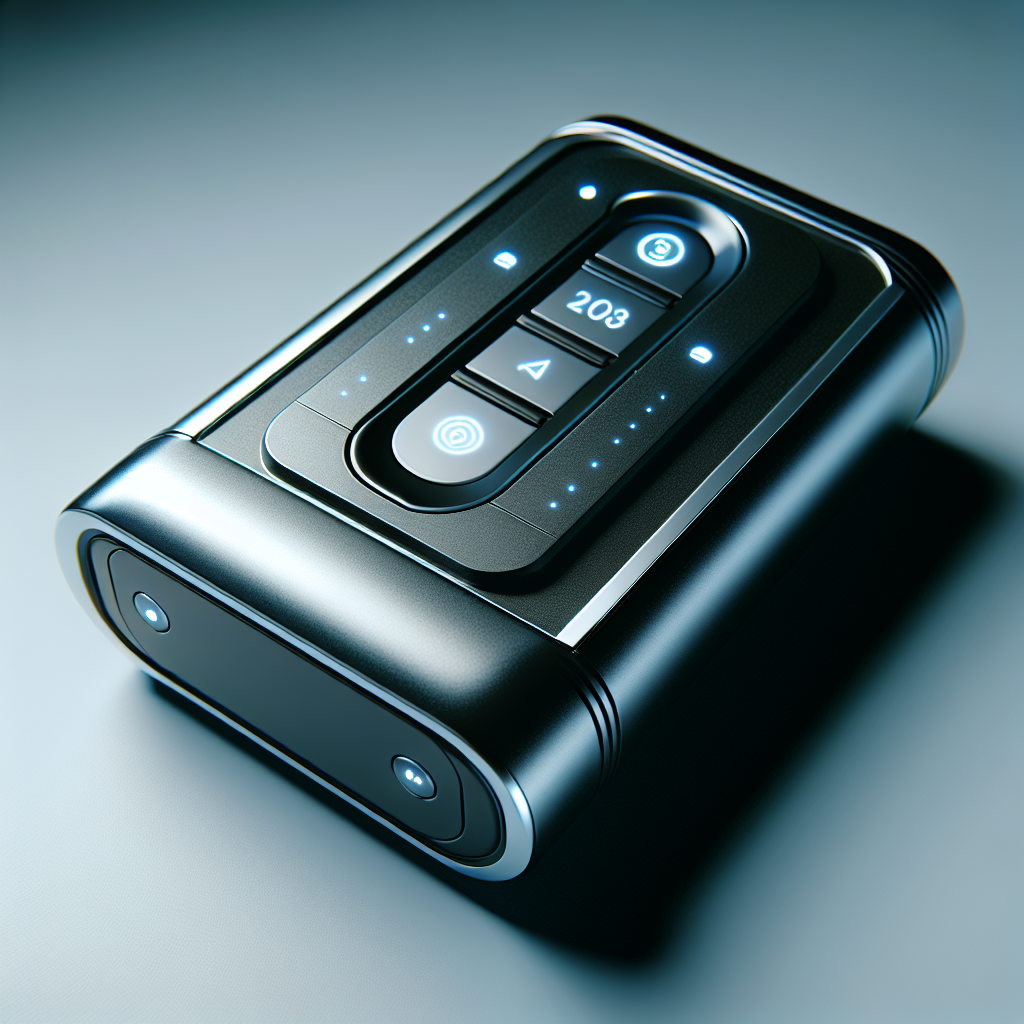
If you’ve ever found yourself racking your brain on how to install a new garage door opener, fret no more! This article will guide you through the step-by-step process of installing a new garage door opener, making it a breeze for you to tackle this DIY project. From gathering the necessary tools to safely connecting the wires, we’ve got you covered. So, say goodbye to the frustration of a malfunctioning garage door opener and say hello to the satisfaction of successfully installing a new one yourself. Let’s get started!
Getting Started
Determining the Type of Garage Door Opener
Before you can begin installing a new garage door opener, it’s important to determine the type of opener that is most suitable for your garage. There are three main types of garage door openers: chain drive, belt drive, and screw drive.
A chain drive opener uses a metal chain to pull or push the garage door along the rail. This type of opener is generally the most affordable but can be noisy during operation. On the other hand, a belt drive opener utilizes a rubber belt to smoothly lift and lower the door, making it a quieter option. Lastly, a screw drive opener rotates a threaded steel rod to move the door, offering a balance of affordability and noise level.
Consider factors such as noise level, budget, and personal preference when determining which type of garage door opener is right for you.
Gathering the Necessary Tools and Materials
Once you have determined the type of garage door opener you want to install, it’s time to gather the necessary tools and materials. Here’s a list of items you will typically need:
- New garage door opener kit
- Power drill
- Screwdriver set
- Wrenches
- Level
- Step ladder
- Measuring tape
- Pliers
- Safety glasses
- Wire stripper
- Screws and bolts (provided with the opener)
Make sure to check the specific requirements of your chosen garage door opener and consult its instruction manual for any additional tools or materials that may be needed.
Preparation
Checking the Door and Spring System
Before beginning the installation process, it’s important to check the condition of your garage door and its spring system. Inspect the door for any damages or signs of wear and tear. Ensure that the springs are in good working condition and properly balanced. If you encounter any issues with the door or springs, it’s best to address them before proceeding with the installation.
Clearing the Garage Area
Next, clear any obstructions in the garage area where the new opener will be installed. Remove any items that might hinder your movement or access to the opener components during the installation process. This will create a safer and more efficient environment for the installation.
Disconnecting the Power
For safety purposes, it is crucial to disconnect the power to the existing garage door opener before attempting to remove it. Locate the power source and turn off the circuit breaker or unplug the opener from the electrical outlet. This step will help prevent any accidental activations or electrical shocks during the installation process.

Removing the Existing Opener
Removing the Door Arm and Hardware
To remove the existing garage door opener, start by disconnecting the door arm and other hardware attached to the door itself. Use a wrench or screwdriver to remove any bolts or screws holding the arm in place. Carefully detach the arm from the garage door and set it aside.
Disconnecting the Wires
Once the door arm and hardware are removed, locate the wiring connections between the opener and the electrical system. Depending on the setup, there may be a variety of wires, including power supply, safety sensor, and control wires. Use a wire stripper to carefully disconnect and remove each wire, taking note of their positions for later reference.
Unbolting the Opener
With the wires disconnected, it’s time to remove the existing opener from the ceiling or wall. Identify the mounting brackets or bolts that secure the opener in place. Use a wrench or power drill to unfasten these bolts and carefully detach the opener from its mounting location. Be mindful of the weight of the opener and have a helper assist if necessary.
Installing the New Opener
Attaching the Trolley and Rail
Begin installing the new garage door opener by attaching the trolley and rail to the ceiling or wall, depending on the specific instructions provided with your opener. Ensure that the rail is level and securely fastened to the designated location. Double-check the alignment using a level to guarantee smooth and accurate operation.
Mounting the Opener to the Ceiling
Once the rail is securely attached, mount the new opener to the ceiling or wall, ensuring that it is aligned with the rail and properly centered. Follow the manufacturer’s instructions to ensure the opener is securely attached and positioned correctly. It’s important to ensure that the opener is stable and level to avoid any issues during operation.
Connecting the Wires
After the opener is securely mounted, reconnect the wires that were previously disconnected from the old opener. Refer to the manual provided with your new opener to determine the proper connections for each wire. Use a wire stripper, if necessary, to remove the insulation from the wire ends before connecting them as instructed.
Adjusting the Travel and Force Settings
Once the wires are connected, it’s time to adjust the travel and force settings of the new opener. These settings control how far the door opens and closes and the force exerted by the opener during operation. Follow the manufacturer’s instructions to carefully adjust these settings to ensure optimal performance and safe operation of your garage door.

Attaching the Drive System
Installing the Chain or Belt
Depending on the type of opener you have chosen, install the chain or belt according to the manufacturer’s instructions. For chain drive openers, attach the chain to the rail, ensuring proper tension. For belt drive openers, install the rubber belt onto the pulley system, making sure it is properly aligned and tensioned.
Attaching the Drive System to the Trolley
Once the chain or belt is installed, connect it to the trolley or carriage system of the opener. This connection allows the chain or belt to move the trolley along the rail, thereby opening and closing the garage door. Follow the manufacturer’s instructions to ensure a secure and properly functioning attachment between the drive system and the trolley.
Installing the Safety Features
Mounting the Photoelectric Sensors
Safety features such as photoelectric sensors are an essential component of any garage door opener. These sensors detect objects or obstructions in the path of the closing door, preventing accidents and damage. Install the photoelectric sensors according to the manufacturer’s instructions, positioning them on either side of the garage door opening at a suitable height.
Attaching the Manual Release Rope
In the event of a power outage or emergency, having a manual release rope is crucial. This feature allows you to manually open the garage door when needed. Attach the manual release rope as instructed by the manufacturer, ensuring it is easily accessible and operates smoothly. Familiarize yourself with the proper use of the manual release mechanism for future reference.

Testing and Adjusting
Programming the Opener
Once all the components and safety features are installed, it’s time to program the garage door opener. Follow the specific instructions provided with your opener to sync it with your remote control, keypad, or any other controlling devices. Test the programming by opening and closing the door using the remote control to ensure proper functionality.
Testing the Operation
After programming, it’s essential to test the operation of your newly installed garage door opener. Activate the opener using the remote control or wall button, and observe the door’s movement. Make sure it opens and closes smoothly, without any excessive noises, hesitation, or erratic behavior. If any issues arise, consult the troubleshooting section of the instruction manual or seek professional assistance.
Adjusting the Open and Close Limits
To ensure the garage door opens and closes to the desired positions, adjust the open and close limits on the opener. This adjustment allows you to set the stopping points for the door’s movement. Follow the manufacturer’s instructions to properly adjust these limits, taking into account the specific needs and dimensions of your garage door.
Final Steps
Reattaching the Door Arm and Hardware
With the new opener successfully installed and tested, it’s time to reattach the door arm and other hardware to the garage door. Align the arm with the attachment point on the door and securely fasten it using the appropriate bolts or screws. Ensure that the arm is properly connected and does not hinder the movement of the door.
Plugging in and Testing the Power
Before the installation process can be considered complete, plug in the new garage door opener to the power source and turn on the circuit breaker, or connect it to the electrical outlet. Test the opening and closing operation of the garage door again, using the remote control or wall button, to ensure that the power supply is properly connected and functioning as intended.
Installing the Wall Button and Remote Control
To provide convenient access to the garage door opener, install the wall button and remote control according to the manufacturer’s instructions. The wall button should be mounted in a suitable location, easily accessible near the entrance to the garage. Ensure that the remote control is programmed correctly and securely stored in a convenient place for regular use.

Troubleshooting
Identifying Common Issues
While installing a new garage door opener, certain issues may arise that require troubleshooting. Common problems include the door not closing or opening fully, irregular door movement, or error messages on the opener display. By consulting the troubleshooting section of your opener’s instruction manual, you can identify and address these issues effectively.
Fixing Sensor Alignment
One common problem with garage door openers is misalignment of the safety sensors. If the door does not close or reverses immediately after hitting the floor, the sensors may need realignment. Check that the sensors are facing each other and the sensor beams are unobstructed. Make necessary adjustments to ensure the sensors are properly aligned for the garage door opener to function correctly.
Addressing Opener Malfunctions
Sometimes, despite careful installation and troubleshooting, the garage door opener may experience malfunctions. This could include issues with the opener not responding to commands, making unusual noises, or displaying error codes. In such cases, refer to the troubleshooting section of the instruction manual for guidance or consider contacting a professional garage door opener technician to diagnose and fix the problem.
Maintenance and Safety Tips
Lubricating Moving Parts
To ensure smooth and efficient operation, it is important to regularly lubricate the moving parts of your garage door opener. Apply a lubricant specifically designed for garage door systems to the rails, chains, belts, and hinges. This will help reduce friction, prevent wear and tear, and extend the lifespan of your opener.
Regularly Checking Safety Features
While your newly installed garage door opener comes equipped with safety features, it’s essential to regularly inspect and test them for optimal functionality. Check the alignment and cleanliness of the photoelectric sensors and ensure that the manual release mechanism is working correctly. Regular maintenance and testing of these safety features will help keep your garage door opener operating safely.
Hiring Professional Help When Needed
While installing a new garage door opener can be a rewarding DIY project, there may be instances where professional help is necessary. If you encounter complex technical issues, are unsure about specific steps, or simply prefer the expertise of trained technicians, it’s best to hire a professional garage door opener installer. They will ensure that the installation is done correctly, providing you with peace of mind and a properly functioning garage door opener.
